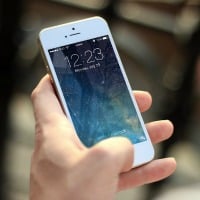The design is sleek; the technology impressive; the camera stunning; the sound awesome. And this digital device is even more high-powered – if only it were safe.
And big news, there is no headphone jack.
Apple™ states “The new AirPods offer a game-changing listening experience. Designed with a huge amount of forward-thinking technology inside a tiny device, these wireless headphones combine crystal clear sound with a new sense of freedom.”
While this innovation delights tech enthusiasts, prominent public health experts are raising the alarm.
Why the concern?
Simply, there is a growing body of scientific evidence that wireless microwave radiation is potentially harmful to human health, including damage to DNA, leakage of the blood-brain barrier, cognitive impairment and cardiac symptoms.
How can this be?
Surely there are safety standards limiting our exposure and manufacturers must comply? And someone is monitoring the rapid rise of WiFi and other digital technology for adverse health effects?
After more than a decade studying and writing about this issue, it seems clear to me the accuracy of safety standards is a key factor.
This is why experts, including Dr Martin Blank – a cell biologist who published more than two hundred peer-reviewed studies while a professor at Columbia University – are calling for a review of these standards.
Dr. Blank cautions, “We don’t feel this radiation and we think it’s not doing anything, but it’s a very potent biological agent and government safety standards are irrelevant. There is evidence of harm; the standards are not protecting us.”
“Government regulators are just plain wrong”. The environmental health physician, Dr. David Carpenter, made that hard-hitting statement.
“Irrelevant”, “Just plain wrong”?
This is because the standards are set only for radiation powerful enough to heat human tissue. They do not consider the ‘low’ levels emitted by WiFi, mobile phones and wireless headsets.
While these levels do not heat human tissue, there is significant evidence of harm. Pregnant women, children and youth are especially at risk.
Proximity is a crucial factor, as the strength of this radiation drops off dramatically at distance. This is why experts strongly advise keeping all mobile devices as far as possible away from the body, especially keeping mobile phones away from the head and vulnerable brain tissue.
(You can imagine my distress when I see a pregnant woman resting an iPad or mobile phone on her belly, or see young children on these wireless devices.)
So, back to headphone jacks: wired headsets are considered essential if you want to reduce your risk when using a mobile phone.
Joel Moskowitz, PhD, Director, Center for Family & Community Health School of Public Health University of California, Berkeley is a leading expert in this field. He reported recently, “Apple’s new AirPods are wireless earbuds that employ Bluetooth technology to communicate with your smart phone, laptop, or smart watch. If one uses the AirPods many hours a day, the cumulative exposure to the brain from this microwave radiation could be substantial.”
Dr Moskowitz goes on to refer to the risks to the brain from exposure to Bluetooth radiation and the risks of higher levels of radiation.
The concern is also that the user does not have the option of limiting their exposure with a wired headset. This is similar with iPads – even if you want to opt for a safer wired internet connection, you can’t do this, as there is no input jack – it can only be connected wirelessly.
Here is an excerpt from my book, A Wellness Guide for The Digital Age, with advice from technical expert Rob Metzinger of Safe Living Technologies:
Headsets, Earpieces – Safer Solutions:
Here is a summary of headset options – worst to best:
Worst – Cell phone held against your head, up to your ear, using a wireless headset, then a conventional wired headset.
Better – The air tube headset is non-conductive thus separating you from the wires and speaker. This makes it better than a wired headset, and certainly much better than a wireless one. For best results, ensure the phone is at a distance and you are not in contact with the wire or the phone. Note: compatible adapters for your particular model of mobile phone may be challenging to find.
NativeUnion.com makes this ‘Retro’ POP handset for mobiles; it looks just like a corded phone handset and plugs into your mobile phone, or computer, to reduce radiation exposure. The bluetooth model is not advised.
Best – Using a phone with a good quality speaker (away from the body without contacting it) is a safer option but most speakers are poor quality sound and don’t allow privacy. This is where the air tube headset comes into play. Note: these steps reduce radiation but mobiles are still not safe.
Safe – Standard landline phone; choose the corded phone. (If you are electro-sensitive, use the speaker function on the landline.)” Switch from cell/cordless phones to corded landlines to maintain your health. Best: one with batteries, not plugged into a wall socket.”
Of course, this advice is falling on mostly deaf ears. At a seminar recently someone asked me, “What’s a landline?”
More details at: www.SaferTechSolutions.org – also my A4M posts on “Electro-magnetic Radiation“.
~Written by Kerry Crofton, PhD




